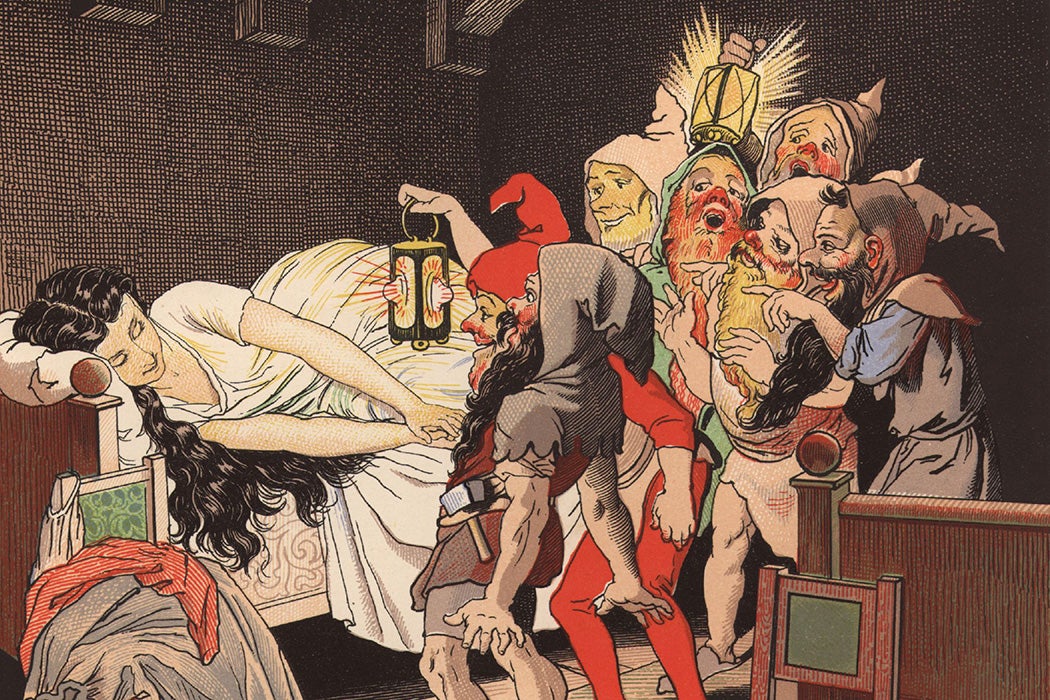Once upon a time, there was a beautiful princess who was likely one of the main characters of stories aimed at young children.
Women’s Studies professor Lori Baker-Sperry and Sociology professor Liz Grauerholz looked into the prevalence of what they call “the feminine beauty ideal” in fairy tales.
“Children’s fairy tales, which emphasize such things as women’s passivity and beauty, are indeed gendered scripts and serve to legitimize and support the dominant gender system,” they explain.
They analyzed stories from a 1992 English-language translation of The Complete Fairy Tales of the Brothers Grimm, which is based on the seventh edition of Children and Household Tales (1857). The collection includes 250 stories, but Baker-Sperry and Grauerholz didn’t consider fairy tales without human characters nor ones that weren’t available in English in the 1800s. Consequently, only 168 fairy tales are represented in their dataset. They framed their review of the literature with a few pointed questions, such as “Is there a clear link between beauty and goodness?” and “Are there instances where danger or harm is associated with beauty or desirability?”
Ninety-four percent of the fairy tales include descriptions of human characters, both female and male, with the average number of mentions per story being 13.6. “There is no substantive gender difference in the number of times physical appearance is mentioned (the average number of times that physical appearance is mentioned in reference to men is 6.0 and for women is 7.6),” they note, “but there is a notable difference in the range of references for men and women. The number of references to men’s physical appearance ranges from 0 to 35 per story, whereas the range for women is 0 to 114.”
Digging deeper into mentions of beauty/handsomeness by gender and age revealed that “women’s beauty is highlighted more than men’s attractiveness, and that beauty plays a more dominant role for younger women than for older ones.” They found “approximately five times more references to women’s beauty per tale than men’s handsomeness (the average number of references to women is 1.25 and 0.21 for references to men’s handsomeness).”
As to their initial research questions, Baker-Sperry and Grauerholz found “a clear link between beauty and goodness, most often in references to younger women, and between ugliness and evil.” Some 31 percent of the fairy tales associate beauty with goodness, while 17 percent associate evil with ugliness.
One example of this connection can be read in the story Mother Holle, which begins, “A widow had two daughters, one who was beautiful and industrious, the other ugly and lazy.” As the story plays out, beauty is rewarded with good fortune, lack of beauty is punished.
Weekly Newsletter
Still, while fairy tales may uphold standards of gendered beauty, Baker-Sperry and Grauerholz recognize that they “cannot determine the extent to which messaging concerning feminine beauty found in fairy tales have in fact been internalized or by whom.” And though not the norm, movies such as Shrek, in which the main character, Fiona, is transformed into an ogre rather than a “beautiful maiden,” can be seen as a challenge to traditional constructs of beauty and goodness.
However, “such retellings of fairy tales are rare, and the cumulative effect of the more traditional tales, in conjunction with the unidirectional nature of media, makes such agency difficult,” they conclude.
Editor’s Note: This article has been updated to add two missing hyperlinks.
Support JSTOR Daily! Join our new membership program on Patreon today.







